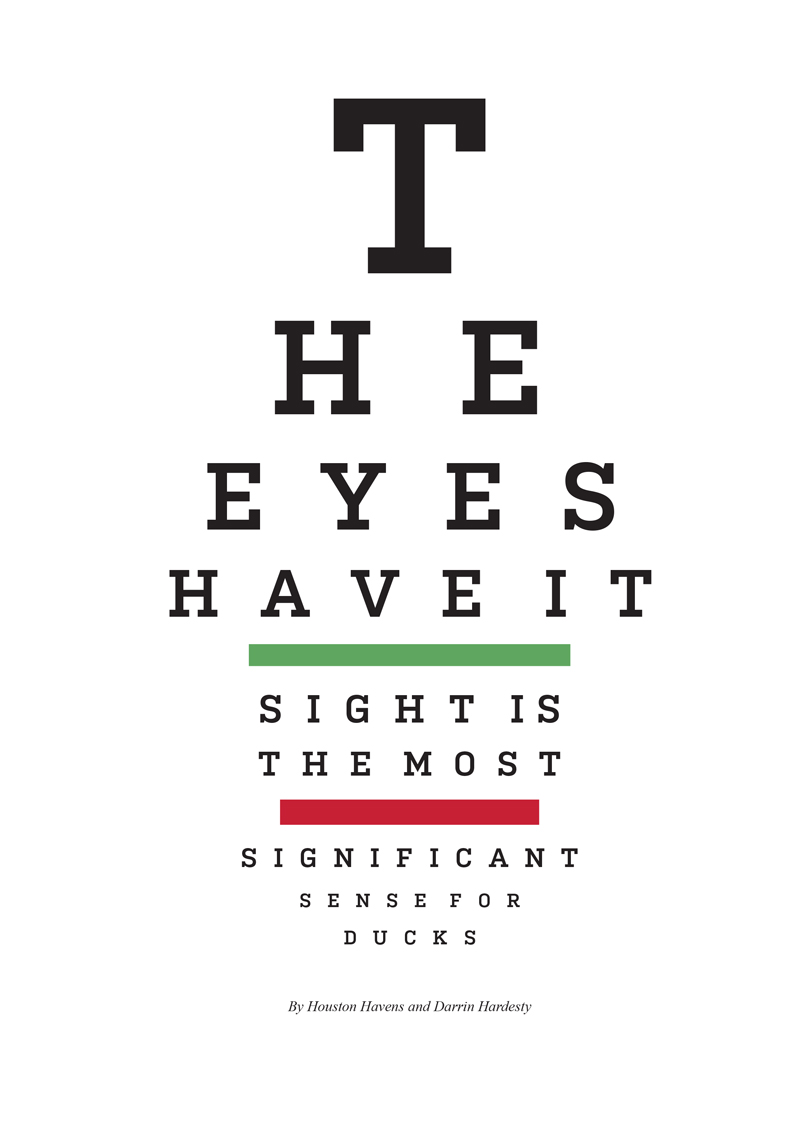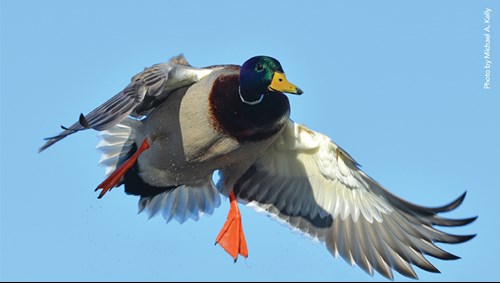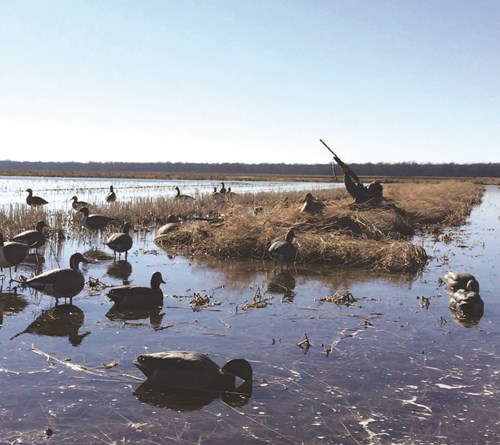11/4/2019 10:04:40 AM

A duck hunter wades into a wetland to adjust the decoys for the third time, frustrated because the ducks seem to be flaring away from something. As they turn to head back to the hunting blind, the hunter notices how visible everyone has become in the increasing daylight. Most duck hunters can identify with this scenario or a similar one, which highlights the importance of remaining well-hidden for a successful duck hunt.
Eyesight is arguably the most important sense for ducks because it is used in various ways for everyday survival. Ducks use their eyesight for things such as long-range assessment of habitat across the landscape during migration, fine-scale selections of habitat fit to meet their daily needs, predator avoidance, and subtle details in plumage and body condition of potential mates. Because of these important roles, ducks have a highly developed sense of sight, which makes them a challenging quarry for the avid wingshooter. Ducks tend to congregate in groups during fall and winter, compounding this challenge with multiple pairs of eyes, analyzing every detail of the natural world below.
Concealment
Many factors can affect a hunter’s ability to combat the keen eyesight of ducks. One of these most easily controlled factors is concealment, or how well hunters are hidden. Unlike many other game animals, ducks can see colors in vibrant arrays, so blending in with the surrounding area is important for hunters wishing to lure ducks into close range.

One way to blend in is to match hunting clothing to the surrounding vegetation, but it can be difficult to find the right camouflage pattern for each hunting area. Knowing the area before the hunt can help tremendously in this regard. Another method is to wear earth-tone colors of your favorite camouflage clothing and to take time before the hunt to either construct a make-shift blind out of natural vegetation or hunt from a portable or permanent blind. No matter the type of blind, the key is to use materials either directly from the hunting location or to closely match that type of material. For example, in a wetland dominated with tan and brown grasses, green blind material would not be the best choice. If ducks are coming near the setup and quickly exiting before they commit, evaluate whether the setup is hidden well enough.
The particular location where a hunter hides can also be important. Facing into the sun, while sometimes unavoidable, can bring out the weaknesses of any hunting setup. Attempt to hide in shadows when possible to avoid flaring ducks with shining faces or hunting gear. As the sun’s position in the sky changes, adjust accordingly to stay out of the bright sunlight. Hiding in the shadows is particularly important when hunting flooded timber. Decoys should be placed in the sunlight when possible to provide high visibility.
Think Over Your Head
Conducting aerial waterfowl surveys from an airplane provides us a visual perspective that many duck hunters likely do not take into account. Although well hidden from all sides at ground level, it is common to see glaring weaknesses in overhead camouflage. In some instances, these setups may be fine for birds decoying quickly upon their first approach. However, if birds begin to circle and “work the spread” as late-winter Mississippi ducks often do, having overhead concealment can be the difference in a great day afield and a frustrating one.

Make Distractions
As with other types of hunting, a premium should be placed on being still when ducks are approaching. Ducks will focus on motion, whether it is attracting them closer or pushing them away, so providing distractions to keep their attention (in a positive way) away from the hunter will often pay off. Many of the latest and greatest duck hunting gadgets are based on some type of motion to get the ducks’ attention and lure them closer. Ducks can easily tell the difference between a spread of motionless decoys and a group of actively swimming or feeding live ducks.
Creating attractive motion can be done in several ways, including placing decoys on a jerk string, hunters moving the water when ducks circle for another pass, or even using motorized decoys. Conversely, any motion not associated with decoys and the water around them will typically yield negative results. Whether reaching for a call, looking up to see where ducks are, or pulling a jerk string, any hunter movement seen by ducks has the potential to undo the day’s hard work.
Change Is Good
In the pursuit of game birds like ducks that have superior eyesight, travel in groups, and are highly mobile, one of the most important things to remember is if a particular strategy is not working, then make a change sooner than later. The chance of the next group of ducks behaving similarly is usually high. From adding brush to a blind, to creating a lower profile, to changing locations altogether, correcting the problem can often lead to success.
Houston Havens is the MDWFP Waterfowl Program Coordinator. Darrin Hardesty is a MDWFP Waterfowl Program Biologist.









